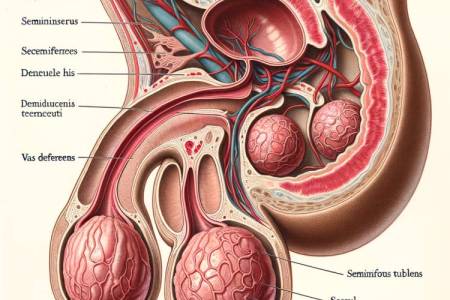Medieval Sexuality: Sin and Severe Punishments
Medieval sexuality—an intriguing and shocking topic at the same time. It was an era where human desire clashed with strict religious rules, and the concept of sin intertwined with virtue across all social classes. What were the true norms and practices during the Middle Ages? What lies behind these contrasts?
Sin and Its Punishment
In medieval Europe, sexual morality was closely tied to Christianity. The Church wielded significant influence over daily life, imposing strict rules regarding sexual behaviour. Sex outside marriage, adultery, and homosexuality were deemed grave sins. Clergy and monks frequently preached about fiery hellish torments awaiting those who succumbed to bodily desires.
One example is Queen Eleanor of Aquitaine, accused of adultery, leading to the annulment of her marriage to King Louis VII of France. This case demonstrates how severely sexual transgressions were punished, even at the highest societal levels.
The most commonly used punishments included:
- Public Humiliation
Public humiliation was one of the most common penalties for sexual offences. Its purpose was not only to punish the sinner but also to serve as a deterrent example for others. Pillorying involved binding the offender to a wooden structure in a public place, where passersby could mock, spit on, or even stone them. Another form of punishment was the enforced wearing of shameful symbols—offenders had to don specific attire or markings indicating their wrongdoing, such as horns for adulterers. - Flogging and Physical Punishments
Physical punishments were widespread, aimed at inflicting pain and humiliation. Offenders were frequently publicly flogged, a penalty often reserved for prostitutes and adulterers. In more severe cases, body parts could be cut off. For instance, men caught engaging in homosexual acts might have their genitals removed. - Imprisonment and Exile
Offenders often faced lengthy imprisonment or exile from their community. Punishments for severe sexual transgressions could include life imprisonment, especially for homosexuality or adultery. In some cases, offenders were banished from their towns or villages, resulting in the loss of homes and livelihood. - Fines
While less common, fines were still employed as punishment, particularly among lower classes or in cases where financial compensation was an option. Offenders had to pay substantial fines, often serving as reparation for harm caused or as a form of ecclesiastical penance. - Death and Cruel Executions
The gravest penalties were reserved for serious sins considered threats to society's very foundation. Homosexuality, witchcraft, and certain cases of adultery were often punished by burning at the stake. This brutal punishment was meant to serve as a warning to others. Crimes like rape and incest could be punished by strangulation or hanging. These punishments were public spectacles designed to intimidate potential sinners.
Marriage as a Sacred Union
Marriage was viewed as the sole proper context for sexual relations. Church teachings emphasized that the primary purpose of marriage was reproduction, deeming all other forms of sex sinful. Sex was to be conducted solely for conception and with minimal pleasure. The renowned scholar St. Thomas Aquinas even stated that marital sex could be sinful if driven solely by physical desire.
The Virtue of Virginity
Virginity was highly prized, particularly among women. A bride was expected to be a virgin, symbolized by a white veil and the marital bed. Virginity was seen as virtuous and pure. An example is Saint Cecilia, who reportedly convinced her husband Valerian that they should both remain celibate.
Forbidden Pleasures
Despite these strict norms and punishments, hidden aspects of medieval life persisted. Erotic literature, such as Giovanni Boccaccio's famous Decameron, reveals that people harboured desires and fantasies. Secret love affairs, prostitution, and love poems were common, even if often concealed from public view.
Prostitution: Sin or Necessity?
Prostitution was paradoxically seen as a lesser evil, helping to prevent greater sins such as adultery. Cities housed official brothels where women offered sexual services. This tolerance, however, did not mean that prostitutes had an easy life—they were often socially ostracized and suffered from poverty and diseases.
When studying medieval literature, I was struck by how frequently references to sexual morality appeared in texts. One of the most intriguing examples is the Malleus Maleficarum, the infamous treatise on witches, which details alleged sexual practices between witches and demons. This text not only highlights fear and fascination with sexuality but also reveals how women were often demonized and punished for their sexuality.
Medieval sexuality was a complex interplay of sin and virtue, religious rules, and human desires. While the Church strongly influenced sexual norms and behaviours, people always found ways to express their human nature and desires. Today, we can explore these contrasts and better understand how our own sexual morality and norms have evolved. Medieval sexuality was not just about strict rules and punishments but also about the stories of people that unfolded in the shadows of cathedrals and castles. Every era has its own approaches to love and sex, and the Middle Ages offer a fascinating glimpse into a past where sin and virtue met in daily life.

 Tongue Tornado
Tongue Tornado 














Comments (0)
Facebook Comments (0)